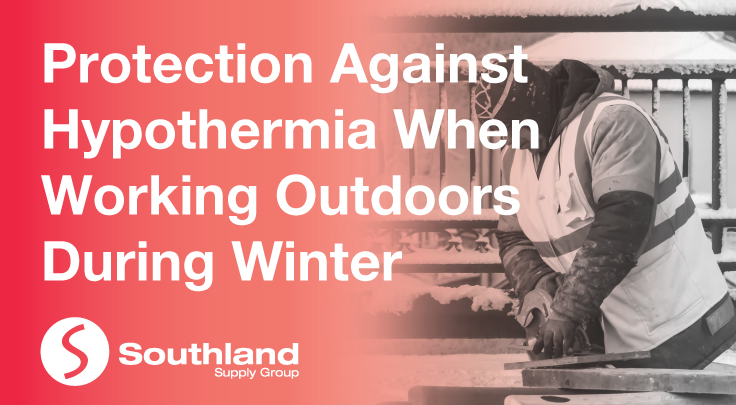
As the winter months have now started, it's crucial to take extra precautions when working outdoors. The harsh and unforgiving cold weather can pose various risks to our health, with hypothermia being one of the most severe.
Understanding Hypothermia
Hypothermia occurs when the body's core temperature drops below 35 degrees Celsius. It is mostly associated with exposure to extreme cold, but it can also occur at higher temperatures if a person becomes chilled from being soaked with rain or submerged in water.
Severe shivering is one of the first signs of hypothermia. But as hypothermia progresses, shivering gives way to drowsiness or exhaustion, confusion, shallow breathing, irregular heartbeat, slurred speech, loss of coordination and, eventually, unconsciousness and death.
What simple measures can be applied to protect workers?
As an employer, you can put simple administration controls in place:
- Make sure the workwear and PPE you have supplied are appropriate for the conditions. Necessary PPE during winter includes safety gloves, wet weather jackets, safety boots and more.
- Provide mobile facilities for warming up where possible.
- Encourage drinking warm fluids such as soup and hot drinks.
- Introduce more frequent rest breaks so workers have time to warm up or change if their clothing is wet.
- Consider delaying the work; can it be delayed until warmer times of the year?
- Educate workers on recognising the early symptoms of cold stress
What wet weather gear should workers be provided with?
As an employer, it is important to dedicate some time to researching the different designs and materials available, to select the best garments for your employees and help them maintain thermal comfort. Additionally, you’ll need to consider the type of activity the individual workers will be performing and choose appropriate clothing for each role, as well as for the cold. In some cases, you may need to allow employees to adopt the staff uniform policy if strictly adhering to its rules will present risks.
Wet Weather Jackets
Consider what kind of task the worker will be carrying out, for instance, it may be best to choose lighter-weight jackets that won’t restrict movement and are easy to put on and take off. Also, consider whether a hooded jacket will interfere with safety headgear or compromise hearing protection. Ideally, these wet weather jackets should have a means of varying insulation and airflow, such as multiple layers or thermal linings that can be added or taken off to suit the conditions.
Safety Boots
Remember when choosing suitable safety boots for outdoor work, that they may need to be larger to allow for thicker thermal socks. As with any type of work, safety footwear must be chosen in response to the hazards present in the environment. Additionally, it’s recommended that the upper is made of waterproof material with a thermal lining, so the feet are kept warm while also being able to breathe. Choose footwear with enhanced slip resistance, high flexibility and durability, so it can stand up to the common challenges workers will face in difficult weather conditions.
Thermal Gloves
Many jobs require work gloves year-round, but your regular work gloves may not cut when the temperature drops. You need a pair that’s particularly designed to handle extreme cold and wet conditions. A well-made, high-tech pair of thermal gloves often features a waterproof layer to keep your hands dry (wet hands get cold fast).
Thermal Undergarments
Thermal undergarments are the best layer of clothing to protect you from chilly temperatures. It has the capability to protect your skin as well as provide sufficient warmth to your body. Thermal undergarments may include thermal top, thermal leggings and thermal long johns.
Working outdoors during winter can be a challenging endeavour, but with the right knowledge and precautions, you can protect yourself from the dangers of hypothermia. Safeguarding your extremities and using proper protective equipment are vital steps in preventing hypothermia. Remember, your health and safety should always be a top priority, so prioritise adequate preparation and take necessary measures to protect yourself against the freezing cold.
